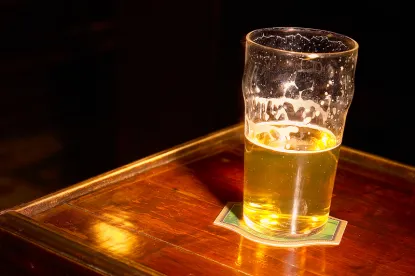In January 2009, an Australian company named Innvopak Systems applied to register WINEBUD as a trademark for (three guesses?) wine. Perhaps anticipating trouble, Innvopak expressly stated in its application – not once but twice – that the mark would not be used in connection with beer.
Trouble found them anyway, in the form of an opposition proceeding in the Trademark Trial and Appeal Board brought by the Anheuser-Busch company, owner of the well-known trademarks BUDWEISER and BUD, for beer. Last month, after nearly five years of litigation, the TTAB sustained the opposition, ruling that Innvopak’s WINEBUD mark was likely to create consumer confusion with respect to Anheuser-Busch’s BUD marks.
At first glance, the result may seem surprising. BUD, after all, is a common English word with numerous meanings, at least one of which – “a compact knoblike growth on a plant that develops into a leaf, flower, or shoot” – could easily pertain to grapevines. Indeed, Innvopak submitted evidence that “vine bud” is a commonly used term in the science of viticulture. And adding the word WINE makes the marks look and sound different, at least to a degree.
Perhaps the most striking aspect of the case is that the respective marks were for products that seem quite different: beer and wine. As if the mere inclusion of the word WINE in the mark itself weren’t enough to make the distinction, Innvopak made it eminently clear that its mark would not be used for beer. But in the eyes of the TTAB, beer and wine are more similar than one might think. In the end, the TTAB rejected the Australian company’s application.
The beer-wine connection runs both directions. An Oregon winemaker that operates under the trademark NAKED WINERY has recently filed an infringement lawsuit against a Philadelphia-area brewery, seeking to stop it from using NAKED as a trademark for beer.
It’s hard to say where this course of action might lead. If its goal is to stop all other trademark uses of the word NAKED for alcoholic beverages, the Oregon winemaker has its work cut out for it. The Trademark Office’s online database currently lists more than a dozen live applications or registrations that include the word NAKED for beer, and no fewer than 22 other NAKED marks for wine, which would seem to be even more problematic. (The marks themselves range from the sedate, like NAKED GRAPE, to the quirky, such as NAKED FISH, NAKED PIG, and NAKED MEXICAN.) The existence of so many other similar marks will likely help the Philadelphia brewery defend against the infringement claim. But even a positive outcome will come with a hefty price tag.
These cases illustrate several points that should be noted, not only by wineries and breweries, but by all brand owners:
-
“Close” counts, not only in horseshoes and hand grenades, but also in brandmarking. When assessing whether an existing mark poses an obstacle to a new one, it is not necessary that the marks be identical. The marks only need to be “confusingly similar,” a determination that can – as in the case of WINEBUD – be open to debate.
-
Similarly, the parties’ goods and services only need to be “related.” The legal standard for this is “a likelihood that purchasers will be misled into the belief that they emanate from a common source.” Usually this is demonstrated with evidence that a large number of market participants routinely make both products.
But not always. Even though very few wineries brew beer, and most breweries don’t make wine, the TTAB has long since ruled that wine and beer are “related” because “both are alcoholic beverages that are marketed in many of the same channels of trade to many of the same customers.”
If that sounds like a broad set of criteria, it is: in one case the TTAB ruled that beer and tequila were “related” for similar reasons. And as Innvopak learned, even expressly excluding a competitor’s product line from your application may not be enough.
-
Size matters. “Strength of the mark,” as measured by length of use and degree of name recognition, is an important factor, and famous marks – like BUD – will usually be accorded a higher level of protection.
The lesson is: before you choose a name for your new business or product, conduct a thorough search of other names that are already in use as trademarks, and that might create a risk of infringement liability or an obstacle to registration. As the cases above illustrate, that search may need to be considerably more extensive than you might think.




 />i
/>i

